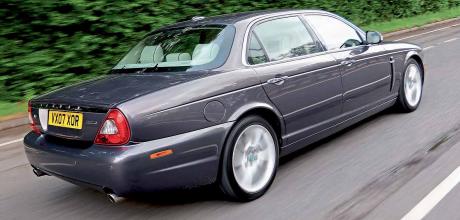2007 Jaguar XJ Sovereign 2.7 Diesel X358
Can a pre-production former press car turn into a future classic, especially one with the much maligned 2.7-litre diesel engine? We find one.
WORDS & PHOTOGRAPHY ROB HAWKINS
Special Reserve XJ DIESEL
Unearthing a very early example of the X358, with diesel power and a past life as a preproduction press car.
I can remember my teenage years during the Eighties when the majority of Jaguars I came across were regarded as nothing but old bangers. Many an XJ was seemingly transforming into a rot box and was consequently either scrapped or robbed of its parts for spares or to build a kit car. The classic car boom that crashed towards the end of that decade helped to preserve some models, such as the E-Type, but those XJ saloons including the now rare XJC were disposable and not worth the trouble.
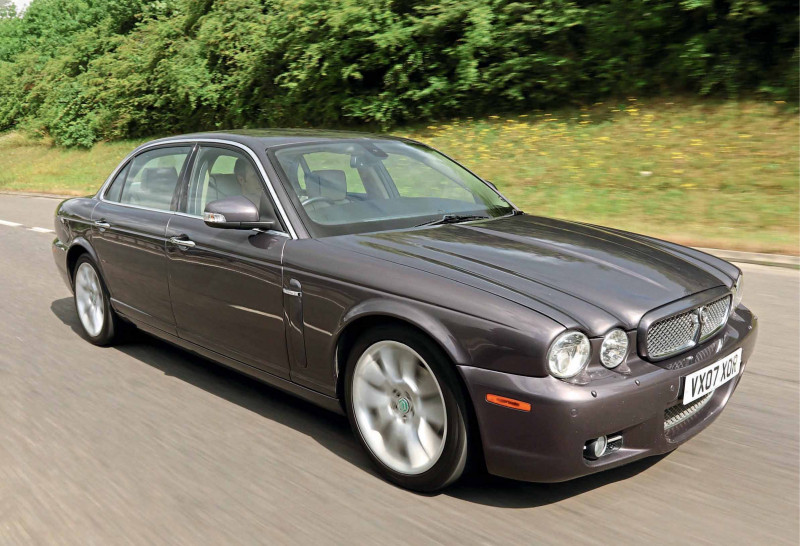
As with many other mainstream cars, most notably Fords, many people are now left metaphorically kicking themselves for not preserving their family cars that fell to ruin and are now worth a small fortune. So, should the 2007 Jaguar XJ X358 seen here be preserved and pampered in the hope that one day it will turn into a pot of gold?
Unsurprisingly, this particular vehicle wasn’t bought by its current owners Auto Reserve, independent Jaguar breakers and parts specialist, as an investment. They bought the car with a rattling engine earlier this year, having been buying up Jaguars with anything from rotten bodywork to knocking engines since 2006, preferring to buy vehicles they can test-drive before dismantling them to help determine which parts can be removed and sold. So, at first, this was just another Jag to them, albeit a long-wheelbase model.
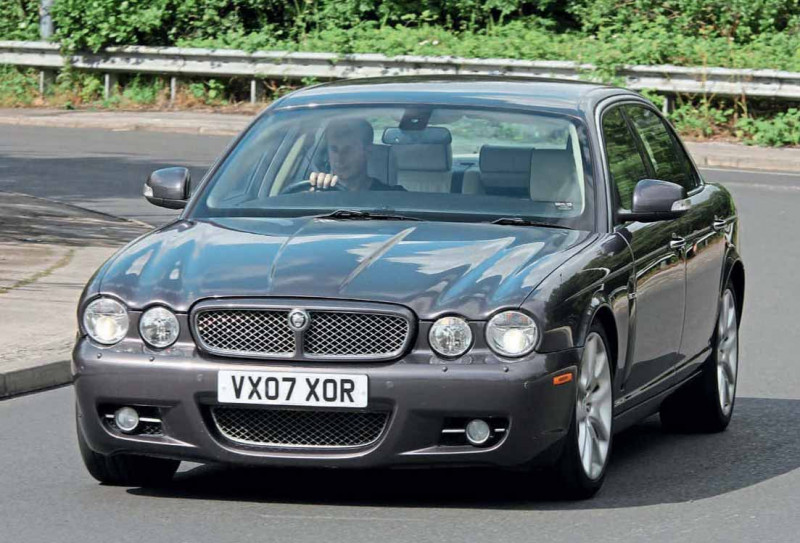
However, the almost spotless Pearl Grey (paint code JBC2030) exterior along with the Ivory leather interior caught their attention. With nearly 130k on the clock, it’s not much for a 16-year-old vehicle, but it has clearly worn well, and its MoT history tells a familiar tale of brake and tyre issues raising advisories or other failures that have been straightforward to remedy.
Looking over the fully loaded interior, there are toys galore. Rear seat passengers, for instance, not only have extra legroom thanks to an additional 12.5cm (almost five inches) between the front and rear wheels provided by the 3159mm wheelbase, but the rear seat bases are individually adjustable with the controls on the outer edges of the bolsters. And that’s not all. There are folding picnic tables mounted in the backs of the front seat with courtesy lighting below, DVD screens in the backs of the headrests and an impressive bank of controls hidden inside the centre armrest.

My favourite, however, is perhaps one of the simplest luxuries that must have taken countless hours of development time and testing to get right – the sun blinds. Whilst there’s an electronically controlled rear blind over the parcel shelf, the ones I like the most are the manually operated roller blinds mounted inside each rear door, which extend upwards and hook into the door top. No, they don’t have any electrical gadgetry to their credit, but they are a clever idea, although perhaps sure to fail if the retractable mechanism inside the roller blind fails, or the edges of the blind become frayed. Or maybe I’ve just spent too much time fixing Jaguars and photographing them being fixed.
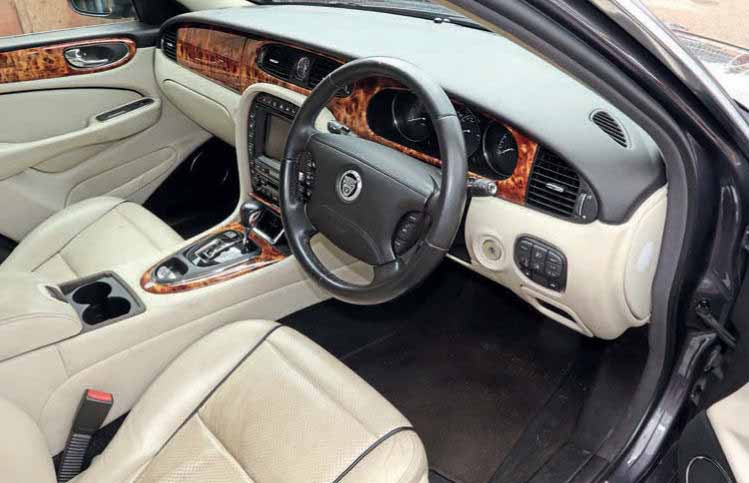
The driver and front seat passenger areas are equally luxurious, with all the refinements that have become expected as standard on Jaguars. Electrically adjustable seats, electric windows and an electronic park brake are standard XJ features from this era. Those front seats are cooled, which consists of cooling fans inside the seating that blow air out through the perforations in the seat covers. In theory, it’s an additional means of allowing the seats to breathe and reduce the chance of the occupant sweating.
There are some dated aspects, such as a traditional ignition key instead of a more modern keyless system or fob, but also some neat features that will never look old, such as the sliding centre compartment that moves backwards to reveal a couple of cup holders. Having the benefit of a two-post lift at AR, the XJ is positioned over it and raised.
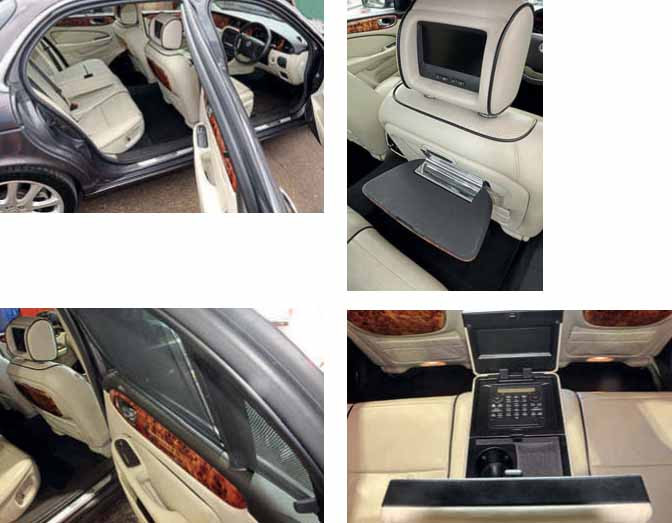
We plan to service the engine and inspect the suspension anyway. With the large plastic undertray removed from below the engine bay area, there’s more to see of the mechanical components that propel this XJ and keep it on the road. Typical of many a Jaguar, there’s surface corrosion on everything from the rear differential to the subframes and suspension components.
Fortunately, the bodywork is made from aluminium, a move from steel that was made with the X350 generation of this model, but had we been looking at an earlier XJ, we would have been hoping that any bodywork rust hadn’t created any additional holes. Whilst Auto Reserve has seen far worse examples of underside surface corrosion and broken many examples where the subframes have failed the MoT test, this XJ would benefit from rustproofing to help extend the life of some components. Ideally, removal of the subframes to have them media-blasted and either painted or powder-coated is the best way forward, and AR does this job, selling refurbished subframes for a number of models.
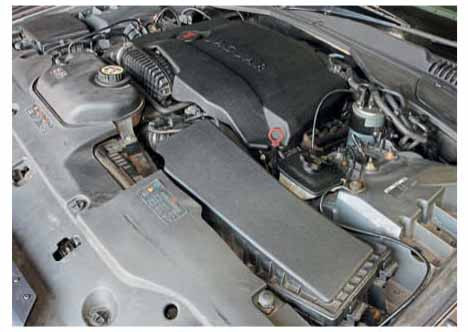
The team at Auto Reserve haven’t merely discovered a seemingly wellpreserved XJ. As mentioned, it arrived at their workshops with a rattling engine and they promptly fitted another from a 55-plate XJ with 93k on the clock.
The PSA-developed 2.7-litre V6 diesel engine is found in a number of Jaguars and Land Rovers, along with French vehicles such as the Citroën C6 and seems to have become an infamous motor due to a number of common problems, many of which lead to engine failure. Fractures around the oil pump housing and broken crankshafts are two worth mentioning.
This model also has a diesel particulate filter (DPF), which can create problems that result in engine failure. It’s important to routinely check the engine oil level on the dipstick, which should be roughly three-quarters full. If it unexpectedly rises, then the DPF may have been regenerating, but an incomplete cycle could have dumped fuel into the engine oil – a DPF regeneration requires the vehicle to be driven above 40mph for around 45 minutes.

In such cases, the engine oil should be drained and replenished to reduce the risk of internal damage, and the regeneration of the DPF needs to be completed or at least monitored using diagnostic equipment. There are mixed opinions concerning the reliability of the 2.7-litre V6 diesel engine, but from the independent Jaguar specialists we have spoken to, they all seem to know how to look after them, and this is perhaps the answer. Routine maintenance, ranging from an annual oil and filter change to having the front timing belt renewed every 10 years or 105,000 miles and the rear belt changed every 150k, will help to keep such an engine alive and well.
“These are very strong, tough engines,” comments AR’s Andy Harper. “We believe that if they are regularly serviced there should be no concerns. Andy’s opinions aren’t solely based on breaking Jaguars. The firm has been involved in racing an X350-generation XJ that’s powered by one of these engines (see the July 2022 issue of JW for a full feature).
“Our opinion of the 2.7 diesel has improved greatly since we began the race car build,” says Andy. “We have thrashed the engines since the first testing sessions to find out just how much punishment they will take. The only time we have destroyed one is through outside factors that have been no fault of the engine design as such – examples including coolant leaks in the pipe system, and on one occasion a small piece of plastic from one of the swirl valves in the inlet manifold being sucked through and causing piston damage.”
The racing conditions that Andy describes involves keeping the engine under high load for 15-20 minutes with the tacho reading between 2500rpm and 4500rpm. On hot race days, the coolant temperature has been up to 125°C.
“Our current engine is one that we reconditioned with new bearings and rings and it has done 16 races including the Birkett Relay race at Silverstone – a full one-hour stint using just 70 litres of fuel,” Andy continues. Compared to AR’s petrol V8-engined S-Type race car, this would have consumed over 200 litres of fuel at the same event.
So this XJ seems to have the correct ingredients for being a keeper, but that’s only half the story. What really makes it extra special is its history. “The VIN is H17341, so it’s quite a lot earlier than the official first models of the X358 at H18680,” says Andy. Jaguar’s online search of the vehicle reveals it’s listed as a pre-production vehicle and Daniel at AR found a press photo of the exact vehicle.
Being the X358 generation of the XJ, this was a facelift evolution of the X350, which formed a greater milestone in the history of the model, having as mentioned, an aluminium body instead of steel. The updates for the X358 included redesigned bumpers, along with a new front grille, door mirrors with side repeaters and front wings with new vents. Inside, the front seats were redesigned and the aforementioned cooling system was incorporated.
Auto Reserve has since put this XJ up for sale with a price tag of £8000. They’re hardly a typical car sales outlet, making more money from stripping Jaguars and selling the parts, but this one is clearly too good to take apart. The burning question is whether this XJ is worth the gamble as a future investment.
To answer this, you have to look at the cost and effort required to keep it in top condition to ensure its future value is sufficient to warrant this. Had I bought a Series II XJ back in the mid-Eighties and dry-stored it for almost 40 years, would I have made a profit? Well, to keep it preserved, I would have had to service the vehicle annually (including changing the coolant and brake fluid every two years), have it MoT-tested and replace perishables such as tyres and wipers. Add in the cost of insurance and storage and let’s assume that annual costs were a conservative £500 per year in today’s money, which means that after 40 years, I would have spent the equivalent of £20,000.
Despite a Series II selling for the same amount, I have only broken even and would have been better off putting the few hundred quid that it would have cost into a savings account.
The same argument can be applied to this newer X358. Put your money in an ISA for example, is the best advice, but if you want a taste of luxury motoring for the price of a well worn Ford Fiesta, and create the memories that will go with it, then perhaps there’s a happy medium here. Use it, look after it and you may just break even.
Thanks to Auto Reserve 0115 837 2707 autoreservejaguar.com
2.7-litre TDV6 was recently installed.
ABOVE: Rear seat passengers are treated to almost five inches of extra legroom in the LWB model, plus adjustable seats.
BELOW: Rear door blinds roll inside the doors.
ABOVE: Front seats were revised for the X358 and include a cooling system.
RIGHT AND BELOW: DVD screens mounted in the backs of the front seat headrests are controlled via a panel in the centre armrest.


